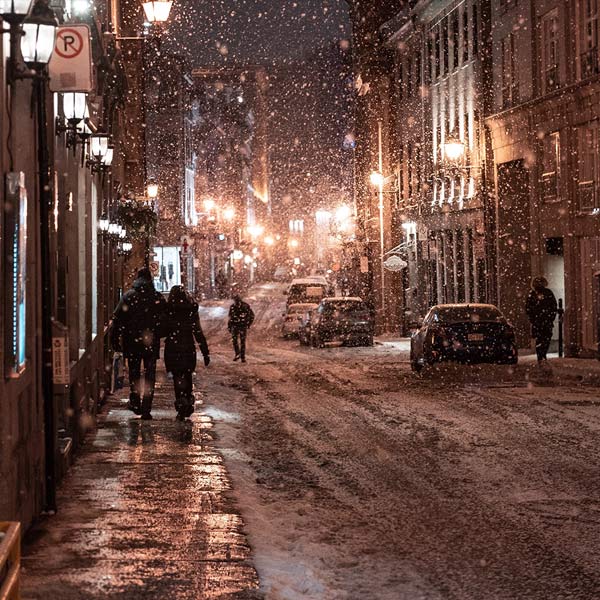Introduction
I asked to enter into a discussion of The Beautiful Mystery because reading the Acknowledgments and the Prologue hooked me before ever opening Chapter One.
I’m a lifelong operaphile, starting at age 13 when a friend took me to see Renata Tebaldi singing in La Traviata at Chicago’s Lyric Opera. Tebaldi was a robust woman, decked in a gorgeous dress featuring real camellias, so the idea that she grows increasing frail and dies of consumption reeked of miscasting—except that her voice was glorious, passionate, convincing, the music moving, so in the end I accepted Violetta’s fate. Music made me believe, music was the passport to Verdi’s story, into a world where its logic, if you can call it that, ruled.
I’ve chased operas all over the world for 60 years now, and every performance produces the same immersion experience. And I’ve learned that opera grew out of church music, from the simple beginning, chants such as those sung by the monks of the monastery of Saint-Gilbert-Entre-les-Loups, to more complex performances. As I’ve grown older I travel back from the complexities of Puccini to the operas of Monteverdi, then Cavalli, and back farther into the rediscovered music of Hildegard of Bingen.
You can make a little of this journey by listening to a transitional stage from chant to opera in the “The Play of Daniel.” And read medievalist Priscilla Royal’s mystery The Valley of Dry Bones inspired by this play. Its performance requires more of the singers than does chant since it is liturgical drama based on the biblical Book of Daniel accompanied by monophonic music. One of two surviving versions is found in a 13th-century manuscript containing ten liturgical dramas. Recordings exist, as they do of what it is imagined Hildegard’s music was.
However, as Louise writes in the Prologue:
“. . . no one knew what the original chants sounded like. There was no written record of the earliest chants. They were so old, more than a millennium, that they predated written music. They were learned by heart . . . there was power in [their] very simplicity. They first chants were soothing, contemplative, magnetic. They had such a profound effect on those who sang and heard them that the ancient chants became known as ‘The Beautiful Mystery.’ The monks believed they were singing the word of God. . . .
“Gregorian chant was the father of western music. But it was eventually killed by its ungrateful children. Buried. Lost and forgotten. Until the early 1800s. . . ”
Controversy raged over what might be genuine Gregorian chant as resurrected. But no one knew for sure, for there was no starting point, no benchmark against which to compare. So The Beautiful Mystery remains one still. . . . And lies at the heart of this novel where the choir director of the monastery of Saint-Gilbert-Entre-les-Loups, secluded in Québec’s wilderness, is murdered.
Louise writes in the Acknowledgments that she too has a fascination with music “and a very personal and baffling relationship with it.” Like me, she finds it transformative and acknowledges neuroscience that links music with brain function. I’m sure I’ve read that studying is enhanced by listening to baroque music, its harmonies and rhythms inducing better concentration. Certainly this works for me. When my husband turns up jazz at the other end of the house, I get jangled when I hear it, feel edgy. Various mystery writers I know, notably Michael Connelly, Ian Rankin, and Peter Robinson, have discussed with me and with readers how they listen to jazz when writing; So too does John Harvey. So their brains react differently than mine, and no doubt to each other’s, when music is playing. And informs their writing.
The other fascination I have with The Beautiful Mystery is its structure, a marvelous adaptation of a classic form: the country house murder.
What do I mean when I talk about the geometry of crime fiction? There are more or less four shapes. The closed circle wherein all the suspects dwell and the detective is either on the spot at the outset or brought within it. The thriller where the circle opens out into a path or road down which the protagonist(s) and antagonist(s) chase each other. The megaphone shape of novels of suspense that build from a small beginning to a crescendo, much like Wagner’s Liebestod if you listen to it. And finally, the caper, where the lines of the circle, the road, or the megaphone fragment into pieces that end up fitted together like a jigsaw puzzle if the caper is successfully designed. (Appositely “transformation geometry” can be applied to music). I have had some fascinating discussions on this topic with Professor B. J. Rahn of Hunter College and others at Malice Domestic, and with a number of British crime writers.
The village mystery, the country house murder, the murder taking place in a theater or on a ship or, as in a memorable Nero Wolfe novel, inside a banquet room, takes the closed circle shape. The victim and some number of suspects are gathered together; ingress or egress from the circle is limited (maybe a blizzard engulfs a house, or the ship is at sea); and a sleuth whether an amateur with special skills or a policeman or a consulting detective is introduced. Some of the suspects have secrets, some may have none, or as in Christie’s Murder on the Orient Express, a classic closed circle, everyone but the sleuth shares one big one. Alibis, red herrings abound. And often if the plot is diabolically clever, it takes a second murder or more to expose the culprit(s).
I bore you with this because I am so impressed with the way Louise has used this traditional form in her work, especially in The Beautiful Mystery. The community of monks is limited in size. 24 men. It’s cloistered, closed to outsiders. It’s in the wilderness, limiting access and departure; a stranger could not hide. The monks have taken a vow of silence, although they are allowed to sing. When their choir director is murdered, there is thus a very limited circle of suspects and in this religious community, to suspect anyone is almost unthinkable.
The detectives, Armand Gamache and Jean-Guy Beauvoir, arrive by boat with the local agent, Captain Charbonneau. They are admitted. And locked in. And must rely on traditional detecting tools, observations, interviews, intuition, to guide them. They are on their own, although they text the outside world. And attune themselves to the failings, the passions, the pride and the regrets of the monks, the cracks in that circle where the modern world seeps in.
This is actually thrilling stuff, captivating, puzzling, heart wrenching. Louse has a gift for actions arising out of character rather than the characters serving the demands of the plot. The result is an always unpredictable journey for the reader, a voyage of discovery undertaken with Gamache. Plus here, as I’ve said, she sets the stage for future stories even though we don’t see it at the time but only when we’ve read future books.
One of the joys of deep reading of mystery, of learning its conventions and tropes and gaining familiarity with landmark books, is being able to admire the skill with which an author takes the familiar and does something new, something unexpected, something complex yet fundamentally simple, something at once familiar and fresh. You can read The Beautiful Mystery with joy without knowing anything about crime fiction geometry, but it’s a richer experience to see someone engage the levers and give readers an extraordinary reading experience, carrying them out of their world into one like the monastery of Saint-Gilbert-Entre-les-Loups. And Three Pines.
Recap (Prologue and Chapters 1-17)
My Introduction is so long I’m making this short. We begin by talking about music, The Beautiful Mystery, and glimpse its history in the Prologue. In Chapter One we move to the modern story where we get a scene in the monastery and meet Dom Philippe. Then we view Armand Gamache’s daughter Annie with her lover, his second in command Jean-Guy Beauvoir, who gets the summons to join Gamache as the Scene of the Crime Team sent to the monastery. They will pick up a local agent of the Sûreté when they arrive. My favorite quote in the first chapters of the book ends Chapter One. It is so perfect for this story.
Chapter Two allows us to explore the Québec wilderness as the Scene Team travels by boat through rough country to the isolated community. Then we explore the monastery and enjoy a gradual introduction, an immersion, meeting the monks. A joy of this book is its leisurely pace, free of hurry-up pressures from the outside world despite the texting to and fro.
Gamache and Beauvoir observe and interview the monks, none of whom claims to have a clue as to who killed Mathieu. The abbot says, in Chapter Nine, “I actually believed I could look at them just now and tell. That there’d be something different about him. That I’d just know.” Is this naiveté, or is this someone so free of sin himself he truly believes that mortal sin wears a visible face? Our detectives know better. . . .
Gamache asks the abbot, “Who could have done this, mon père?” And the abbot replies, “I don’t know. I should know, but I don’t.” If the leader of the community is so in the dark, cannot see the wolf in his fold, how will two policemen succeed when they have little to work with except their own observations and hearts? (I refer you again to my quote from Matthew10:36).
Eventually, in Chapter Sixteen, Gamache stands in the garden, the scene of the murder, 24 hours after it has occurred. He stands there with the abbot and he imagines himself in the mind of the killer, and he also wonders if Mathieu had sensed he would be murdered. It had taken him a little time to die, a time when he crawled away from the abbey, towards the dark, away from the light. Animal instinct? Or was Mathieu making some kind of statement?
And then comes Chapter Seventeen and a game changer: the arrival of Sylvain Francoeur, the Chief Superintendent of the Sûreté du Québec, dropping from the sky not on wings but via a plane. The dynamics change. And our chapter ends with Gamache thinking about Saint Gilbert, praying to him. And asking himself, “if it was ever right to kill one for the sake of many?” Is he referring to the murder at the monastery, or to something relating to his superior?
In Chapter One we saw how the relationship between Gamache’s daughter Annie and his second, Jean-Guy, had developed. As we move along they are now apart, communicating by text, their own closed circle broken. This is a major thread to follow as the story unfolds. What signals are there to this point about how it will go for them?
Favorite Quote
Anne Daphné Gamache, Matthew 10:36
“And a man’s foes, shall they be of his own household?”
Discussion Questions
- Would you read—or reread—The Beautiful Mystery while listening to, or after listening to, Gregorian chant? (There’s a surprising amount recorded.) Would you expect to alter your reading experience by doing so?
- Chief Inspector Gamache’s writ runs to the whole province. Do the books taking him (and other characters) to new corners of Québec enrich your enjoyment or are you happiest when the story focuses on Three Pines? If so, why?
- Do you find the closed-circle concept works for you when thinking about the structure of the mystery in this book? In any of the others? What challenges does this geometry set the author?
- The monastery is a cloistered community of 24 men. One of them must be the killer. Did you start asking yourself which of them as you read Chapters 1-17? In other words, are you a reader who likes to solve the mystery or do you prefer to wait for the revelation?
- Depending on how you answered that, do you read other authors’ mysteries differently?
- If you have read the books in order as Louise wrote them, by now you know that she plants seeds for future plots. As you read Chapters 1-17 were you struck by anything that might carry forward into a future book?
In her Acknowledgments, Louise mentions the neuroscience of music, its effect on her creativity, its effects on our brains. How does listening to music—and what music you listen to—affect you?





